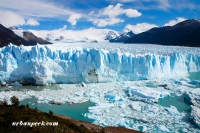Francois Mellet, Electrical Engineer: Uranium in nature is a slightly radioactive metal that occurs throughout the Earth’s crust. It occurs in most rocks, in concentrations of 2 to 4 parts per million. Uranium is about 500 times more abundant than gold. It is also naturally present in most soils, as well as in many rivers and in sea water. The earth’s Uranium (chemical symbol U) was apparently formed in supernovae up to about 6.6 billion years ago. Its radioactive decay provides the main source of heat inside the earth, causing convection of molten rock and consequent continental drift.
Andrew Kenny, Nuclear Africa: Decommissioning of nuclear power plants is neither mysterious nor very expensive. In the USA, more than a dozen nuclear facilities have already been successfully decommissioned, and all around the world many more are being decommissioned or are about to be. New nuclear plants are easier to decommission than old ones, so as time passes the process of decommissioning will become easier and cheaper. Furthermore, as techniques improve, especially with the increased use of robotics instead of humans to dismantle the plants, costs will come down and exposure to radiation will decrease.
Cairns Bain, Nuclear Africa: Long before the advent of the atomic bomb or nuclear power, mankind lived in a radioactive world. Our planet is made up of the nuclear debris of exploding stars, consisting of both the stable elements and also some long-lived radioactive isotopes of uranium, thorium and potassium. We also continue to be bombarded with cosmic rays from our own sun and from distant galaxies. Our very bodies carry a mix of radioactive materials imparted to us from Mother Nature.
Cairns Bain, M.Sc. nuclear physics and Ph.D. coastal oceanography: At the dawn of the nuclear power age it was realised that nuclear power plant workers could potentially be exposed to nuclear radiation from the operating plant. As a result, extensive studies were carried out concerning possible radiation absorption, and what such radiation could then do to the people. These international studies were not confined to the workers at nuclear plants, but were extended to consider any people living anywhere near nuclear plants.







